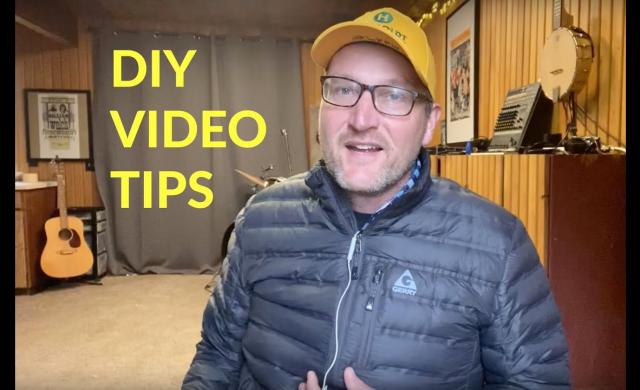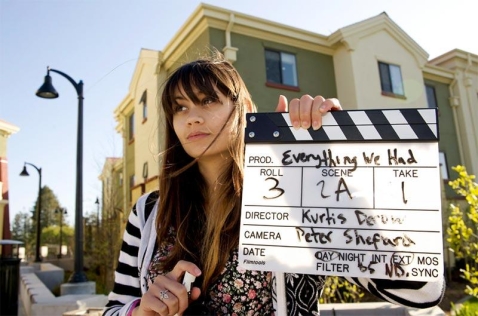Tips for DIY Video at Humboldt
Updated April 2020

Whether it's on Youtube or Instagram, you want people to see the video you worked on!
These informal tips are to empower students, faculty, and staff creating DIY promotional video content for distribution on Humboldt-affiliated social media channels.
As with any creative process, exceptions may apply. If you’re creating a video and hope that Humboldt will share it, contact Marcom before you hit ‘record’.
For Humboldt to share your video broadly:
Closed captions must accompany dialog for all Humboldt-affiliated video and alt-text added to photos. "It is the policy of the CSU to make information technology resources and services accessible to all CSU students, faculty, staff and the general public regardless of disability." Here are some helpful resources:
Music & images must be licensed appropriately. Simple attribution may not suffice.
Youtube’s audio library offers free background music, sometimes with attribution required. For more eclectic selections, check out the Free Music Archive.Proof it for improperly spelled words, glaring mistakes, or factual inaccuracies.
- It is your responsibility to get and retain signed model releases from your subjects. Minors require parental signature.
It shouldn't include portrayals of violations of campus rules unless special permissions are in place. This includes everything from unauthorized drone flights to vaping on campus.
Audio/video production value is subjective, but standards do exist. See the next section for basic best practices.
The content must be consistent with Humboldt Social Media Guidelines.
Level-up your Production Value

Audio
With sound, there is no substitute for proximity, so get the mic as close to the speaker as you can. We strongly advise using an external microphone, with a clip-on mic easily being your safest bet. A boom microphone is your next best bet. Camera-mounted mics are your least-desireable option.
If you must use a smartphone for your video, you can check out smartphone-compatible clip-on microphones from the library. We highly recommend that you do so.
Here's one professor's advice: https://vimeo.com/andrewishak/audio
Video
It's not about the camera, but having a basic DSLR will simply look better.
You may check out cameras from the library. Again, if you want Humboldt to share your video, a smartphone is less likely to provide sufficient quality.
Tripods for DSLRS and smartphones are also available from the library.
When framing a shot, try using the rule of thirds. Simply put, move the subject off to one side of the frame. This a time-tested technique that adds a little bit of “pop” to your shots. It also allows space for onscreen titles and graphics.
Try to have a blurry or similarly non-distracting background.
Consider lighting your subject, and look around your viewfinder for stark shadows or backlighting.
Editing
The statistics are clear: keep it brief. The average viewer makes it through about 50% of a Youtube video. The average Facebook watchtime is under 10 seconds.
Text onscreen helps your message. Closed captions or bullet points increase your video’s engagement.
Over 80% of video on Facebook video is watched with the sound off. Assume you’re making a silent movie.
Software tools will not make or break your DIY video. Adobe Premiere is standard, but you can make simple edits, transitions, and graphics in iMovie, Camtasia, Resolve, and other low/no-cost programs.
A word about smartphone videos
It’s true that smartphones are powerful tools. Indeed, in experienced hands, the camera doesn’t make much difference. However, smartphones are unlikely to deliver the kind of visual and quality needed to put Humboldt’s best foot forward.
Logos and Branding
Humboldt’s wordmarks (logos) can be downloaded here. We recommend using Humboldt’s horizontal wordmark or our standard video intro/outro to conclude your video.
Download video intro and outro
Basic DIY Tips and Tricks
Resources
Need free gear and expertise? The Library’s Digital Media Lab has that.
- Youtube’s audio library offers free background music, sometimes with attribution required. For more eclectic selections, check out the Free Music Archive.
Founder’s Hall vs. Founders Hall? Alumna or alumni? Here’s Humboldt’s editorial styleguide.
All requests for commercial, non-news photography, filmmaking, or videotaping should be referred to Marketing & Communications at (707) 826-3390 or news@humboldt.edu. The campus policy related to this is here: Humboldt Visual/Sound Policy [PDF].
Need still shots? Feel free to download whatever you want from Humboldt’s Flickr Account.